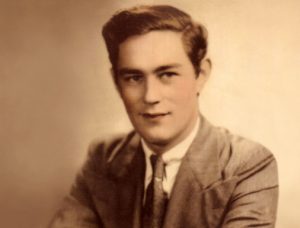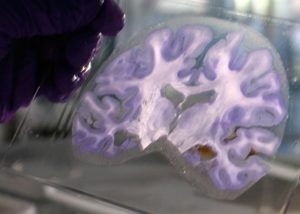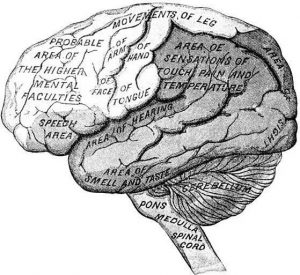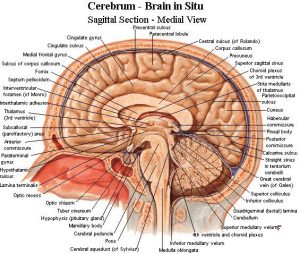BY ARJUNE NIBBER | SQ WRITER | SQ 2017-2018
[hr gap=”null”]
Can you remember a time you felt happy? Try and recall a memory in which you felt proud of yourself. For a real challenge, find your earliest memory. Perhaps images of time with your friends, a graduation, or a first birthday crossed your mind. What you just performed is the process of recall. It may not seem difficult or significant, but it’s an incredibly important neural function, and an essential part of what makes you human. Thinking, feeling, dreaming, remembering–it’s all made possible by that incredible machine between your ears: the brain. These actions are basic parts of everyday life, and are natural processes that we don’t give a second thought to. Yet, for most of history, we had no idea how we did it. It was only in the 20th century that synaptic connections, the neural networks responsible for higher cognitive functions, were identified, and some progress was made in mapping the physiology of the brain. Prior to this, neuroscience was a mysterious, elusive, and dangerous field. Neurosurgeons were cutting into uncharted territory, sometimes with catastrophic consequences.
thought to. Yet, for most of history, we had no idea how we did it. It was only in the 20th century that synaptic connections, the neural networks responsible for higher cognitive functions, were identified, and some progress was made in mapping the physiology of the brain. Prior to this, neuroscience was a mysterious, elusive, and dangerous field. Neurosurgeons were cutting into uncharted territory, sometimes with catastrophic consequences.
Imagine living the rest of your life with only the memories you have right now. Years go by, and several decades later your mind is still living in 2017. It’s a terrifying thought, but it was reality for a man named Henry Molaison, a subject of an experimental, underdeveloped surgery. The surgery meant to cure him of epilepsy instead severely damaged his brain and resulted in a devastating form of amnesia. While tragic, Molaison’s misfortune did have a silver lining: his brain and mental condition became an integral part of modern neuroscience. Over the course of his life and after his death, many mysteries of the brain were studied through “patient HM’s brain”. The unique postmortem dissection of the HM brain, led by Dr. Jacopo Annese at UC San Diego, still yields new information about the human brain to this day. Theories of memory structure, locations of neuronal activities, and insights into amnesia are all attributed to patient HM’s brain. Neuroscientists across the world recognize Molaison’s brain, currently housed at UCSD, for the wealth of information it has provided the biological community.
Henry Molaison was born on February 26th, 1926, with the condition known as epilepsy. At some point during his adolescence, he began to experience symptoms of partial seizures, which evolved into tonic-clonic seizures (seizures affecting the entire brain) by his sixteenth birthday. These seizures warranted a trip to the hospital, where he was seen by neurosurgeon Dr. William Beecher Scoville. At the time, the consensus for the most effective treatment of such neurological disorders was what many would now consider a radical, crude lobotomy. In Molaison’s case, this entailed the removal of his hippocampus, believed to be the source of his epileptic seizures. Scoville, in a prime example of the rudimentary nature of neurosurgery at the time, used only his mouth and a silver straw to suck the hippocampus out of Molaison’s brain. Without his hippocampus, Molaison developed severe anterograde and partial retrograde amnesia. For the rest of his life, he was frozen in time, living only on what he knew prior to 1953. His condition was, of course, an extremely debilitating tragedy. But some extraordinary medical consequences did come out of this. Dr. Suzanne Corkin and a team of researchers at MIT began studying Molaison’s condition. They discovered the specifics of his memory loss, and were particularly surprised to discover that Molaison could learn new motor skills, but after learning, would have no memory of how he had come to develop his new skill. These initial findings were an early sign of the groundbreaking material that would come from studying Molaison and his brain. His condition was studied for most of his life, until his passing in December 2008. Regardless, his legacy in science lived on, as his brain continues to contribute to the pursuit for answers long after his death.
Neuroscientists across the world were aware of the HM brain, and aware of the fact that the brain would become available for further research after his death. This resulted in a bitter custody battle over that gray matter. MIT, Harvard, UCLA, UCSD, and several other organizations and institutions vied to get their hands on what they all knew would be the future of neuroscience. The winner? UCSD. Dr. Jacopo Annese and his team of researchers  were responsible for the unprecedented anatomical study of the HM brain. Their work is part of the reason why UCSD’s cognitive science and neuroscience departments have gained worldwide reputations. This was a comprehensive dissection, analyzing patient HM’s brain from macroscopic structures to the cellular level. The slides from the original dissection are now online, available to the public for anyone to study from them. Since the original dissection, several studies have been founded off the data gleaned from the histological slides, including many that have been organized and published at UCSD.
were responsible for the unprecedented anatomical study of the HM brain. Their work is part of the reason why UCSD’s cognitive science and neuroscience departments have gained worldwide reputations. This was a comprehensive dissection, analyzing patient HM’s brain from macroscopic structures to the cellular level. The slides from the original dissection are now online, available to the public for anyone to study from them. Since the original dissection, several studies have been founded off the data gleaned from the histological slides, including many that have been organized and published at UCSD.
Without Molaison’s brain, there would be a vast amount of information we wouldn’t know about the brain. None of the advanced, physiological drawings of human brains now found in biology and anatomy textbooks, indicating areas of language, speech, visual and auditory stimuli, emotion, and learning, would have been developed without Molaison’s condition. The intricate structures of the brain can now be discussed in as much detail as someone can discuss gross anatomy, such as an arm or a leg. This is in stark contrast to just last century, when the brain was considered an unknowable concept. The evolution is clear:


Aside from advancements in anatomy and physiology, surgical techniques and medicines are devised using research done on the HM brain; treatments for neuropathies have staggeringly less side effects now. His brain truly is one of the foundations of modern neuroscience. And if patient HM’s brain contributed to neuroscience, then it completely overhauled memory science. The hippocampus was removed from Molaison’s brain because it was thought to be a trivial, vestigial structure; no consequence was foreseen from that procedure. Today, classrooms across the globe learn that the hippocampus is a central structure for the processing of new memories, a finding taken directly from Molaison’s original surgery.
Molaison’s surgery was an unfortunate incident, and resulted in severe consequences that he never recovered from. But it also marked the beginning of an incredible scientific opportunity, one that yielded significant information on the organ responsible for higher thinking. Molaison’s operation and the HM brain have undeniably provided us with fascinating insights into the key aspects of being human.
Sources:
- http://brainandsociety.org/patient-hm/
- http://www.npr.org/2016/08/14/489997276/how-patient-h-m-and-his-lobotomy-contributed-to-understanding-memories
- https://www.nytimes.com/2016/08/07/magazine/the-brain-that-couldnt-remember.html
- https://www.ncbi.nlm.nih.gov/pmc/articles/PMC2649674/
- https://www.nature.com/articles/ncomms4122
